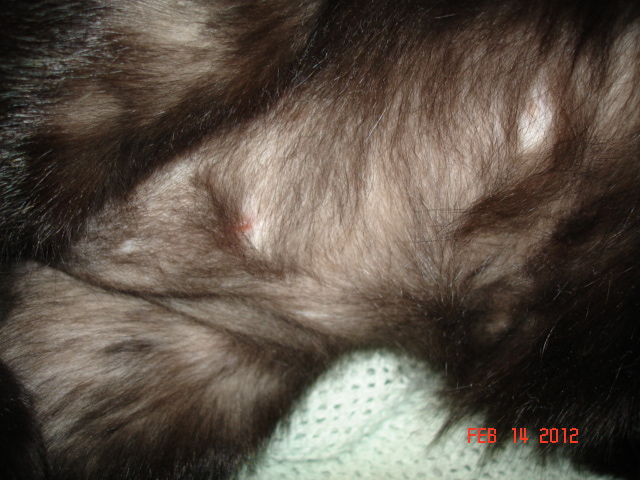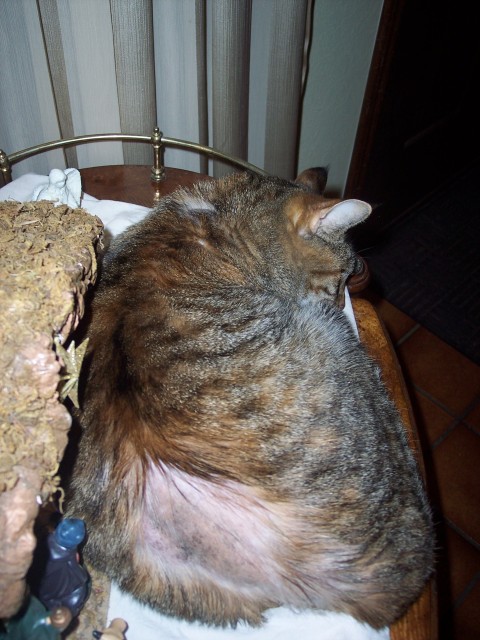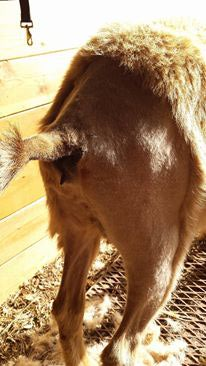QuestionHello, last week my dog, 8 years Pitbull, starting throwing up alot for no reason, in two days she became very sick, refusing to eat anything nor wanting to move at all. I took her to the vet two days ago, the Vets first diagnosis was liver disease considering that my dog was yellow all over. Once the blood tests were done, she saw that almost all of the levels were very high, she compared them to what you see in a 13-14 yr old dog. We left her there since as she needed to be hospitalized immediately. The next day the results of the ultrasound came in and hse saw nothing abnormal in her stomach area, so she now thinks its Leptospirosis considering she believes that her kidney and liver have failed. She will take a blood test today to send out to see if it is Leptospirosis and to see if my dog is reacting to the IV and antibiotics. What bothers me is that she said that almost no dogs live through this but when i do research on the internet to see what Leptospirosis was, all articles suggest a better success rate. Now i know that every dog is different, but I just find it odd that she was SOOO pessimistic. She is a very good Vet and has always been honest with me, so it is not that i dont trust her, but it has been bugging me ever since i started doing research on this disease. I was wondering what another Vet might think. Thank you in advance
AnswerWe do not really see Lepto here in PA where I practice, however, there is some thought that maybe some of these dogs with fevers of unknown origin could potentially be infected with Lepto and when they are put on Amoxicillin or other antibiotic they get better. Each animal is different and you must base prognosis on that individual's signs and symptoms. If your dog is going into kidney and liver failure, then I would say that is a poor prognosis. If the Lepto has already damaged the kidneys, then usually the patient is terminal.
Leptospira interrogans, Leptospirosis
Canine typhus, infectious jaundice, Leptospira
AffectedAnimals:
Dogs, cats, humans, and all other animals can become infected with different types, or serovars, of Leptospira.
Overview:
A contagious bacterial disease of animals that can be passed on to humans, leptospirosis affects the kidneys and the liver, causing damage that can lead to organ failure and death. Typically, rodents and wild animals are carriers of the disease. Infection occurs most commonly when the mucous membrane or abraded skin of an animal or human comes into contact with urine containing the infective leptospire bacteria.
Once infected, the organism begins to replicate in various tissues and causes significant infection in the liver and kidneys, with clinical signs developing within a week of exposure. Cats tend not to be significantly affected by leptospirosis. Dogs, however, can develop serious clinical disease, although not all canines with leptospirosis will show clinical signs of infection. In fact, many animals that have this disease will be asymptomatic or will have chronic or mild symptoms.
Animals can transmit leptospirosis to their owners. People who suspect that they have been exposed to infection should consult a physician.
Clinical Signs:
Clinical signs include anorexia, muscle soreness, depression, tachypnea, vomiting, fever, anemia, pale mucus membranes, dehydration, weakness, diarrhea, stiffness, tachycardia, epistaxis, petechiae, melena, coughing, dyspnea, polyuria and polydipsia becoming anuric, weight loss, ascites, and signs of hepatic encephalopathy due to liver damage.
Symptoms:
Clinical signs may include loss of appetite, depression, increased respiratory rate, sore muscles, vomiting, fever, anemia, pale mucous membranes, dehydration, difficulty breathing, weakness, diarrhea, dark and tarry stools, increased drinking and urinating, jaundice from liver disease, bleeding from the nose, kidney failure, and death.
Description:
Leptospires are tiny, moving spiral bacteria called spirochetes that are found worldwide. Different types of Leptospira can cause disease in animals and humans. Dogs tend to develop leptospirosis from L. australis, L. autumnalis, L.ballum, L. bratislava, L. braviae, L. canicola, L. grippotyphosa, L. harjo, L. icterohaemorrhagiae, L. pomona, and L. tarassovi forms of the bacteria. L. canicola, L. grippotyphosa, L.pomona, and L.bratislava can infect cats. Infections appear to be more common in warm and moist climates, in standing water that is neutral to slightly alkaline pH, and in areas where animals are closely housed, such as kennels and urban settings. In addition, exposure to wildlife and rodents that can carry the bacteria is a significant risk factor.
Diagnosis:
If leptospirosis is present, a complete blood count, or CBC, may show evidence of dehydration, anemia, low platelet numbers, and increased or decreased numbers of white blood cells. A chemistry panel will detect evidence of kidney failure or liver disease. In addition, specific diagnostic tests are available that will detect exposure to Leptospira, such as a test that will examine a blood sample for antibodies to the disease. Before antibiotic drugs are given, the organism can be cultured from urine, blood, kidney or liver tissues.
Prognosis:
For animals that have acute, severe disease, the prognosis is guarded. Most animals, however, have subclinical or asymptomatic disease, or chronic disease. These animals have a fair to good prognosis.
Transmission or Cause:
Leptospires are passed in the urine of infected animals. Infection occurs when the organism in the infected urine penetrates abraded skin or the mucous membranes. In addition, the ingesting of urine in contaminated food, water, or soil can transmit leptospirosis. Transmission also has been known to occur through a bite wound, through the placenta to an unborn animal, and through venereal contact.
Treatment:
Life-threatening complications of leptospirosis should be addressed immediately. Because this organism typically affects the kidneys, the use of intravenous fluid therapy is essential. The use of intravenous antibiotics, such as penicillin and dihydrostreptomycin, is needed during the initial treatment phase. Oral antibiotics are prescribed after the animal has begun to recover. Precautions and proper hygiene should be instituted in order to prevent human infection.
Prevention:
A vaccine is available that provides protection to the more common types of Leptospira bacteria. Dogs in areas of risk should receive three vaccines, given three to four weeks apart; from that time on, they should receive vaccines on a yearly basis. Other prevention steps include keeping rodents away from the animal's environment, since rodents often are carriers of the bacteria. In addition, animals should be kept away from areas in which the bacteria thrive, such as stagnant water, marshes, ponds, and muddy areas. Humans should avoid contact with the urine of animals.

 Dachshund yeast infection in ear-lameness
Question
Pearl
Hi! My 11 yr. old dachshund has a
Dachshund yeast infection in ear-lameness
Question
Pearl
Hi! My 11 yr. old dachshund has a
 Dull Fur & Flaky Skin
QuestionQUESTION: Can you give your cat the human Omega
Dull Fur & Flaky Skin
QuestionQUESTION: Can you give your cat the human Omega
 skin disease/hair loss
Question
hair loss area
We have a cat whose had a 1 inc
skin disease/hair loss
Question
hair loss area
We have a cat whose had a 1 inc
 using Sevin 10 dust around indoor cat?
QuestionHave killed fleas off animals but now fleas in
using Sevin 10 dust around indoor cat?
QuestionHave killed fleas off animals but now fleas in
 Goat Pregnancy
Question
Hoots back end Hoots bag
I have a
Goat Pregnancy
Question
Hoots back end Hoots bag
I have a